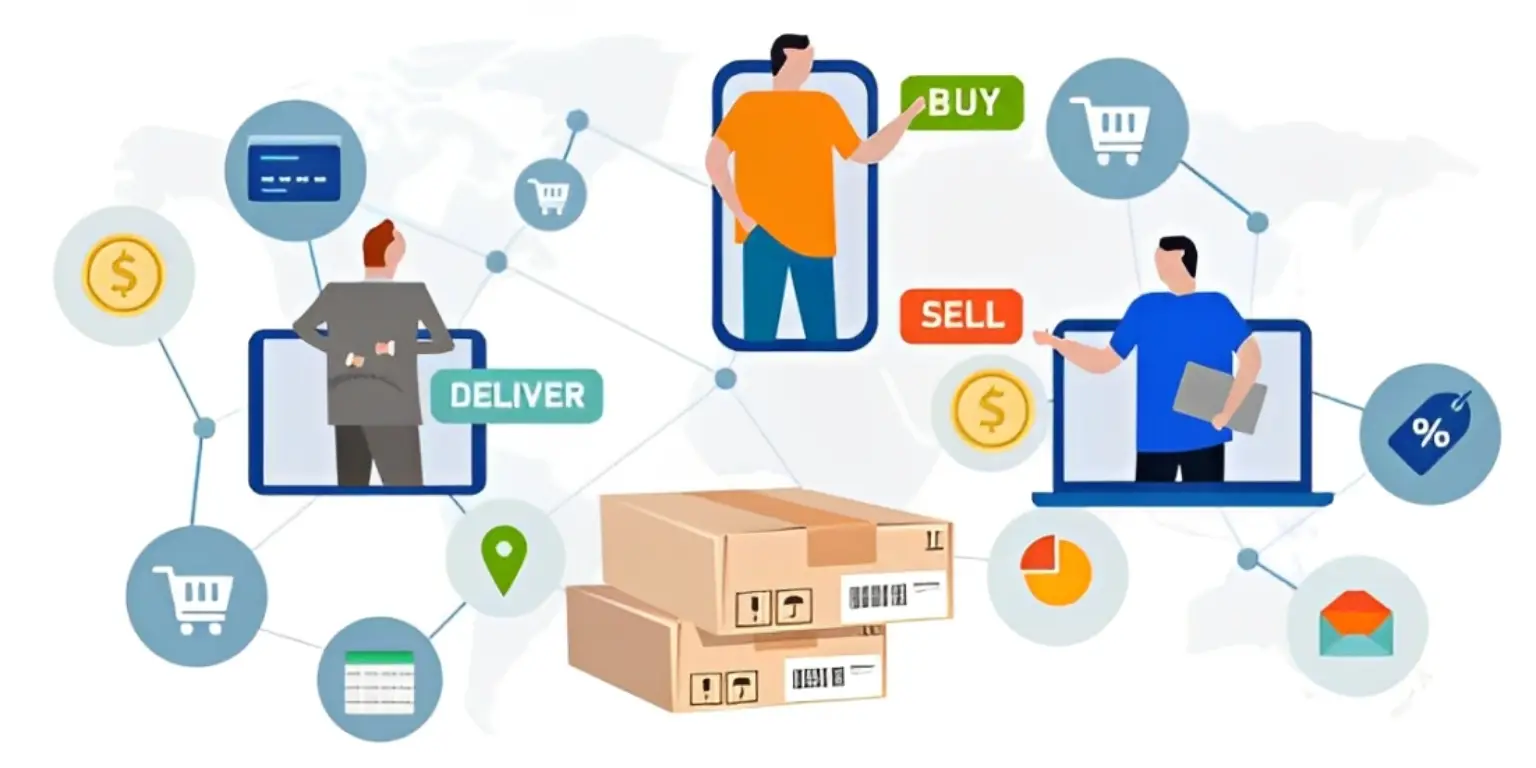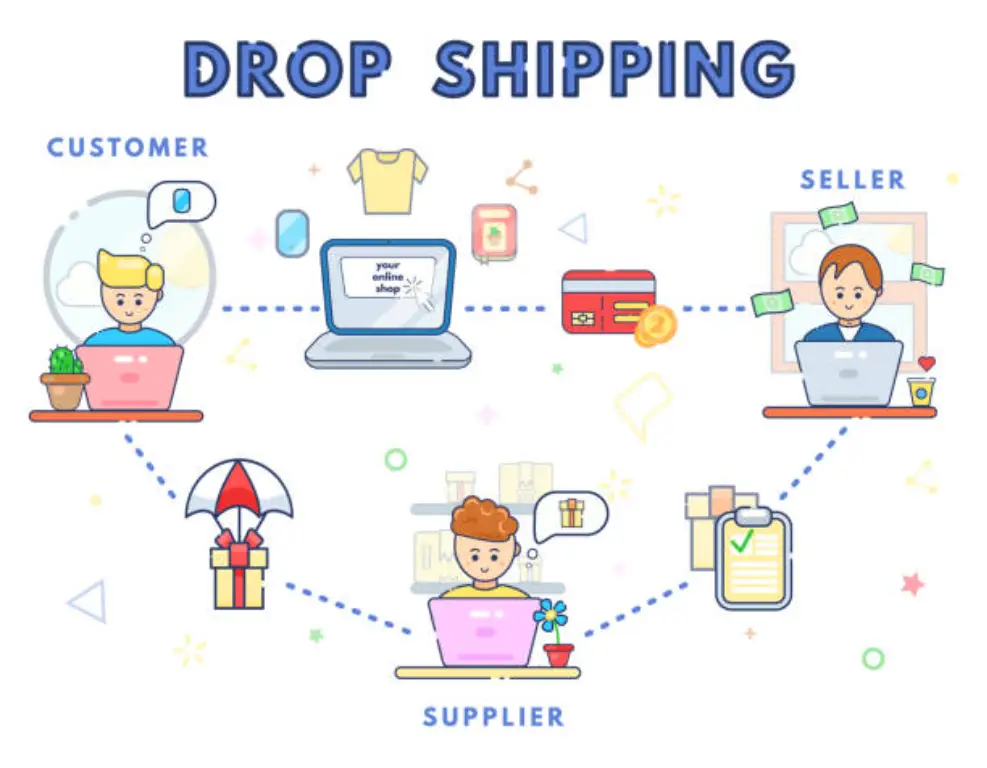When you’re exploring the world of online business, two models stand out: dropshipping and ecommerce. Both approaches offer unique benefits and challenges, making the decision of which to pursue crucial for your long-term success. In this article, we’ll dissect each model, explore their advantages and drawbacks, and guide you toward making an informed decision based on your business goals.
What is Ecommerce?

Ecommerce refers to the buying and selling of goods or services over the internet. This model is as expansive as the internet itself, encompassing everything from small independent online stores to major international corporations. If you’ve ever purchased a product online, you’ve likely interacted with an ecommerce business.
Ecommerce typically involves the business owning its inventory. You purchase products in bulk, manage them in a warehouse, and ship them directly to customers upon receiving orders. Ecommerce offers the flexibility to sell a wide variety of products, whether physical goods or digital items, while also allowing you to establish a unique brand identity. In many ways, it’s the backbone of most online retail operations today.
Advantages and Drawbacks of Ecommerce
Advantages:
- Full Control: One of the most significant advantages of ecommerce is the control you have over your entire business. From product selection and inventory management to customer service and branding, everything is in your hands.
- Branding Opportunities: Ecommerce enables you to build a unique brand. With complete control over your product presentation, packaging, and customer experience, you can establish a strong identity that resonates with your audience.
- Scalability: As your business grows, you can scale your operations. Adding more products, expanding to new regions, and diversifying your marketing efforts are all manageable once you have your logistics in place.
Drawbacks:
- Upfront Investment: Ecommerce typically requires a significant upfront investment. Purchasing inventory, securing storage space, and covering shipping costs can add up quickly.
- Inventory Management: While ecommerce gives you control, it also means you’re responsible for managing stock levels, fulfilling orders, and handling returns. Efficient inventory management systems are necessary to ensure smooth operations.
- Risk of Unsold Stock: If you misjudge customer demand, you risk being stuck with unsold inventory. This ties up your capital and storage space, which can affect your cash flow.
While ecommerce provides substantial control and flexibility, it also demands substantial upfront investment and a sound operational framework. It’s best suited for businesses that are prepared for long-term commitment and want to establish a unique brand.
What is Dropshipping?

Dropshipping is a retail fulfillment model where the store does not keep the products it sells in stock. Instead, when a customer places an order, the store purchases the product from a third-party supplier who ships it directly to the customer.
So, how does dropshipping work? It’s a straightforward process. As a dropshipping retailer, you don’t need to handle inventory or fulfillment yourself. When an order comes in, you forward it to the supplier, who takes care of the packing and shipping. This model eliminates the need for warehousing or managing stock, which makes it an attractive option for newcomers to the online business world.
Statista reports that the global dropshipping e-commerce market was valued at approximately 128.6 billion U.S. dollars in 2020. It is projected that between 2021 and 2026, the value of market size will reach an estimated 476.1 billion U.S. dollars.
While dropshipping may seem like a hassle-free approach to ecommerce, it still requires careful planning and strategic marketing to succeed. It also depends heavily on reliable suppliers to maintain product quality and timely delivery.
Advantages and Drawbacks of Dropshipping
Advantages:
- Low Startup Costs: One of the primary advantages of dropshipping is the minimal initial investment required. You don’t need to buy products upfront, which eliminates the need for warehousing and storage space.
- No Inventory Management: Since the supplier manages the inventory, dropshipping frees you from the logistical challenges of inventory management, order fulfillment, and product shipping.
- Flexible Location: With dropshipping, you can operate your business from virtually anywhere in the world, as long as you have internet access. This flexibility allows you to run your store remotely.
Drawbacks:
- Lower Profit Margins: Since you’re not purchasing products in bulk, your profit margins tend to be lower compared to traditional ecommerce businesses. Dropshipping requires a high volume of sales to generate meaningful profits.
- Limited Control: In dropshipping, you rely on suppliers to handle product quality, packaging, and shipping. If something goes wrong—such as a delay or a quality issue—it will pose negative impact on your business, even though you may have little control over the situation.
- Supplier Dependability: The success of your business depends heavily on your suppliers. If they fail to deliver on time or provide poor-quality products, it can derogate your reputation and customer loyalty.
Overall, dropshipping offers a low-risk, low-investment entry point into ecommerce. But it comes with trade-offs, particularly in terms of control over product quality and customer experience.
Key Similarities Between Dropshipping and Ecommerce

Although dropshipping and ecommerce may seem like two different worlds, there are several key similarities that both models share:
- Online Retail: Whether you’re running an ecommerce store or dropshipping, the fundamental premise is the same: you’re selling products online.
- Marketing Efforts: Regardless of the model, you must invest time and resources into marketing. A shared task for both two types of business model is building an audience, driving traffic to your website, and converting visitors into customers.
- Customer-Centric Approach: Both models aim to provide value to customers. Whether you’re selling physical products you’ve sourced or acting as an intermediary between a customer and supplier, the ultimate goal is to meet your customers’ needs.
Key Differences Between Dropshipping and Ecommerce
So, what is the difference between e-commerce and dropshipping? Here’s a table summarizing the key differences between dropshipping and ecommerce:
| Aspect | Dropshipping | Ecommerce |
| Inventory Management | Supplier manages inventory and fulfillment. | You own and manage your inventory, storage, and shipping. |
| Investment Requirements | Low upfront costs, no need to purchase inventory. | Higher upfront costs for purchasing inventory. |
| Profit Margins | Lower margins due to per-unit pricing and higher sales volume. | Higher margins due to bulk purchasing at wholesale prices. |
| Control and Flexibility | Less control over product selection and branding. | More control over product selection, branding, and customer service. |
| Shipping and Delivery | Varies by supplier, potentially longer delivery times. | You control shipping, ensuring faster and more predictable delivery. |
| Customer Service | Complex, as issues with product quality and shipping are out of your control. | Direct management of customer service, offering a more consistent experience. |
- Inventory Management: In traditional ecommerce, you own and manage your inventory. You handle storage, fulfillment, and order shipping. In dropshipping, the supplier manages inventory and fulfillment on your behalf.
- Investment Requirements: Ecommerce typically requires a larger upfront investment to purchase inventory and manage operations, while dropshipping allows you to start with significantly lower costs since you don’t buy inventory upfront.
- Profit Margins: Ecommerce typically offers higher profit margins due to bulk purchasing at wholesale prices. Dropshipping, however, has lower margins due to per-unit pricing and often requires higher sales volumes to generate significant profits.
- Control and Flexibility: Ecommerce gives you more control over product selection, branding, and customer service. In contrast, dropshipping reduces your control but offers greater flexibility and less risk in terms of inventory management and fulfillment.
- Shipping and Delivery Times: Ecommerce allows you to control shipping, ensuring faster and more predictable delivery. With dropshipping, shipping times may vary, especially if suppliers are overseas, potentially leading to longer delivery times.
- Customer Service: Ecommerce businesses handle customer service directly, ensuring a consistent experience. With dropshipping, customer service can become more complex, as issues with product quality, shipping, or returns are out of your control.
Which Model Is Right for You? Choosing Between Dropshipping and Ecommerce

Now that you’ve explored the pros and cons of both models, how do you decide which one is right for you? The answer depends on your goals, resources, and risk tolerance.
When to Choose Ecommerce Model?
- You Want Control Over Your Business: If you prefer full control over your product inventory, customer experience, and branding, ecommerce may be the better choice for you.
- You Have the Capital to Invest: Ecommerce requires upfront investment in inventory, warehousing, and shipping. If you have the necessary capital and are prepared for long-term growth, ecommerce offers more scalability and higher profit margins.
- You’re Ready for Operational Challenges: Managing inventory, fulfilling orders, and dealing with customer service can be time-consuming. But if you’re up for the challenge, ecommerce offers more opportunities for growth.
When to Choose Dropshipping Model?
- You’re Starting with Limited Capital: If you don’t have the funds to invest in inventory upfront, dropshipping provides a low-cost way to enter the world of ecommerce.
- You Prefer a Hands-Off Approach to Logistics: If managing inventory and shipping isn’t appealing to you, dropshipping allows you to focus more on marketing and customer acquisition, leaving the operational side to your suppliers.
- You’re Testing Different Products: Dropshipping is ideal for testing new products without committing to mass stock. It allows you to experiment with different offerings to see what resonates with your audience.
The choice between ecommerce and dropshipping ultimately depends on your business model preferences, financial situation, and long-term goals.
How Splygo Can Help You Find Reliable Suppliers for Your Business
Whether you choose dropshipping or ecommerce, finding reliable suppliers is critical. Looking for reliable suppliers? Splygo, a trusted China sourcing agent with over 1000 satisfied clients, can connect you to top-notch suppliers that align with your business needs. Partner with us for smooth, efficient sourcing that ensures quality and reliability.




















Contact Splygo for Your Needs
Ready to experience our more services? Contact us today to discuss your requirements and find the right solution for your needs.